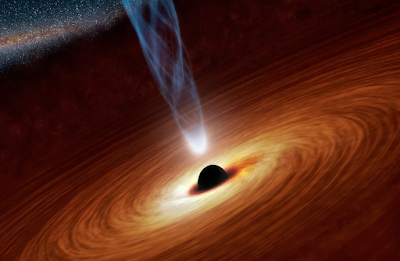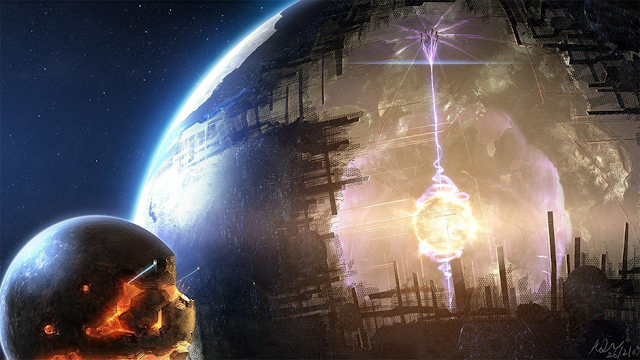Interesting Facts About Black Holes
WHAT IS A BLACK HOLE?
A black hole is a place in space where gravity pulls so much that even light can not get out. The gravity is so strong because matter has been squeezed into a tiny space. This can happen when a star is dying.
Because no light can get out, people can't see black holes. They are invisible. Space telescopes with special tools can help find black holes. The special tools can see how stars that are very close to black holes act differently than other stars.
Could a Black Hole Destroy Earth?
Black holes do not go around in space, eating stars, moons, and planets. Earth will not fall into a black hole because no black hole is close enough to the solar system for Earth to do that.
Even if a black hole the same mass as the sun were to take the place of the sun, Earth still would not fall in. The black hole would have the same gravity as the sun. Earth and the other planets would orbit the black hole as they orbit the sun now.
The sun will never turn into a black hole. The sun is not a big enough star to make a black hole.
1. Black Holes Distort Time and Space Around Them
If you happened to fly near a black hole, its extreme gravitational pull would increasingly slow down time and warp space. You'd be tugged ever closer, gradually joining an accretion disk of orbiting space material (stars, gases, dust, planets) spiraling inward toward the event horizon or "point of no return." Once you crossed this boundary, gravity would overcome all chances of escape and you'd be super-stretched, or "spaghettified" as you plunged toward the singularity at the black hole's center — an inconceivably small point with a monstrous mass where gravity and density theoretically approach infinity and space-time curves infinitely. In other words, you'd be gobbled up and annihilated in a place that utterly defies the laws of physics as we understand them.
2. There Are Too Many Black Holes to Count
The Milky Way galaxy alone contains between 10 million to one billion stellar-mass black holes. Imagine100 billion galaxies out there, each with millions of stellar-mass black holes.
3. Supermassive Black Holes Also Give Birth to Stars and Determine How Many Stars a Galaxy Gets
A recent discovery shows that behemoth black holes occasionally unloose enough material to form whole new stars. Supermassive black holes not only create new stars, but they also control how many stars a galaxy gets by directly impacting how quickly the process of star formation turns off.
4. There are three Categories of Black Holes.
1) Primordial Black holes – These are the smallest of black holes and range from an atom’s size to a mountain’s mass.
2) Stellar Black Holes – These are the most common black holes, and they can be up to 20 times more massive than the Sun. There is also a variety of these all over the Milky Way.
3) Supermassive Black Holes – These are the largest black holes, being more than 1 million times more massive than the Sun.
5. If Light Has No Mass, Why is It Affected by Black Holes?
Light is affected by black holes because of the theory of general relativity, which states that any massive object warps the spacetime around it. This means that the spacetime around a black hole is warped, and light takes the shortest path, which is a little curved. At the event horizon, spacetime is curved into itself, and light cannot escape the black hole.
6. Bullet-shooting black hole
Black holes are known for sucking in the matter, but researchers find they can shoot it out as well. Observations of a black hole called H1743-322, which is five to 10 times the mass of the sun and is located about 28,000 light-years from Earth, revealed it apparently pulled matter off a companion star, then spat some of it back out as gigantic "bullets" of gas moving at nearly a quarter the speed of light.
7. Scientists might have spotted black holes from another universe
One highly-controversial observation suggests that our universe is a latecomer. Earlier universes might have existed before ours and would have contained black holes. Prominent Oxford University mathematical physicist Roger Penrose has argued that cosmic background radiation – an energetic relic from the Big Bang – contains imprints of these black holes from before time. Other scientists have argued that Penrose's data is nothing more than random noise, but the possibility remains intriguing.
Reference
links
https://www.nasa.gov/audience/forstudents/k-4/stories/nasa-knows/what-is-a-black-hole-k4.html
https://www.livescience.com/65170-9-weird-facts-black-holes.html
https://www.space.com/15941-strangest-black-holes-universe-countdown.html
https://www.rankred.com/facts-about-black-holes/
https://www.treehugger.com/weird-facts-about-black-holes-4864130






Comments
Post a Comment